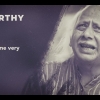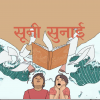The word ‘translate’ comes from the Latin ‘translatio’ where ‘trans’ means across and ‘latus’ means carrying; the word thus means the carrying across of meaning from one language to the other. The various Indian language words for translation do not convey this meaning. Anuvad (speak after), bhashantar (linguistic transference), tarzuma (reproduction), roopantar (change of form), vivartanam (change), mozhimattam (change of script)—what P. Lal, one of India’s well-known translators, has described as ‘transcreation’. This is a process whereby the translation, rather than a docile transference of meaning from one linguistic system to the other, becomes a retelling by the translator in another language. So this implies that our basic concept of translation was different, and we need to explore if this is because classical Indian critical theories conceptualized it differently.
Translation in India: A brief overview
India is a multi-lingual country and has always been so. There are actually two distinct language families in India—the Indo-Aryan and the Dravidian. The most ancient of the Dravidian languages is Tamil, the others being Kannada, Telugu and Malayalam which evolved later than Tamil. The major Indian languages of today derive from either of the two groups, and sometimes two Indian languages might not have many linguistic traits in common. For instance, translation from Hindi to Malayalam means that translation is between two languages that are radically different although they belong to the same region called India. But despite this diversity, we can safely state that Indian languages own a shared sensibility, partly derived from the common heritage of Sanskrit and from ancient theories of literature and language.
Sanskrit was the dominant language in the northern part of India in the ancient times but other languages like Prakrit, Pali and Apabhramsa were used as languages of communication by the common masses. Sanskrit was the language of literature and religious rites. But even in the Sanskrit plays of Kalidasa and other playwrights of the time, the women and lower caste/ class characters speak Prakrit or other dialects like Sauraseni and Magadhi. It was normal and acceptable to change from one dialect into another or one language into another in the course of the same text. Devy points out, 'The extent to which bilingual literary production has been accepted in India as a normal literary behaviour, and the historical length of the existence of such practice are indicative of India’s "translating consciousness"' (136).
As India passed into the medieval period, the influence of Sanskrit declined. The various invasions during this period also brought with them different cultural and linguistic influences. Persian became the dominant language because it was the language of the court; it was also considered to be the elite language of scholarship under the Mughal rulers. The Mughal courts had scholars who were also translators. Baburnama, the autobiography of Babur was originally written in a language called Chagatay but was translated into Persian by Humayun’s minister Bairam Khan. Akbar commissioned translations of Sanskrit works into Persian. The Mahabharata was translated into Persian during Akbar’s time. His great-grandson Dara Shukoh translated the Upanishads and the Bhagavad-gita into Persian.
Translations in this period had many important results. Firstly, it helped to make people bilingual—that is, most of them knew two languages or even more. Secondly, it gave rise to new languages like Urdu which was the result of the interaction of Persian with the local language. Thirdly, translations from other works had the effect of introducing new genres to India. For example, translations from Persian brought in new genres like masnavi, qasida and importantly, the ghazal. They were Indianised to suit the local readers’ tastes; Mirza Ghalib, the most important of ghazal writers wrote in Persian and Urdu. Fourthly, many Indian texts reached the west through Persian translations. As is the case with most texts, there are no accurate written records about these, which makes tracking them down difficult. But we can say without hesitation that translations helped to make Indian culture what it is today, a happy blending of multiple cultural influences. Bilingualism is a common Indian trait even today.
Translation in the Colonial Period
English became the dominant language, ousting Sanskrit and Persian when India was colonized by the British. They initially attempted to establish that the English language and literature were superior to all the Indian languages and literature put together. But it was also important for the British to know the local language as matters of administration had to be in Indian languages. They had to know India well to govern it better. So there was also a reverse movement of translation from India to England. Sir William Jones, founder of the Asiatic Society, translated Abhijnanasakuntalam into English in 1789. Charles Wilkins, official translator of Persian and Bengali to the Commissioner of Revenue, was the first to translate the Bhagavad-gita into English in 1784. These translations had official blessings as they were undertaken with the specific purpose of helping the British to know India better.
After the First War of Indian Independence in 1857 English became the language of administration and it was promoted among the Indians. There were large-scale efforts to translate English books into Indian languages and promote English literature. Many obscure 18th and 19th-century English novels found their way to Indian languages. It was during this period that the Bible came to be translated into most of the regional Indian languages The Bible translations helped a great deal in strengthening the regional languages of India. They were translated into simple language that could be understood by the lay person. It also enriched the vocabulary by bringing in idioms and imagery to illustrate its concepts. The British also contributed to the local languages by bringing out systematic books on grammar and compiling dictionaries. The credit for compiling the first dictionary in most Indian languages goes to some European or the other.
Another major impact of the Bible translations was felt in the translation strategies. The concept of fidelity to the original and the notion of equivalence were introduced to the Indian sensibility. Fidelity in translation became a concern for the first time, because it was felt that the word of God had to be conveyed accurately and with no distortions. This also meant that translators had to be extremely careful about equivalence – that is, if the translation successfully and truthfully ‘carried across’ the meaning/message of the original. This is why G.N. Devy states that the obsession with equivalence in translation is essentially a western metaphysical obsession. He quotes Hillis Miller’s statement: 'Translation is the wandering existence in a perpetual exile'. The analogy is to the eviction of Adam and Eve from the Garden of Eden, after which human life is like a perpetual search for the perfection of Paradise; translation is like exile in search of the perfect equivalence. Devy explains: 'In Western metaphysics translation is an exile, and an exile is a metaphorical translation—a post-Babel crisis. The multilingual, eclectic Hindu spirit, ensconced in the belief in the soul’s perpetual transition from form to form, may find it difficult to subscribe to the Western metaphysics of translation' (Devy 1995:135).
The obsession with the original and the anxiety of not being able to capture the meaning is in some way connected to the theological concept of a paradise that has been lost and has to be regained. The Hindu belief is that human existence on earth is a constant progression of the soul from one birth to the other. It is not concerned about an original state. Time is not conceived of as a linear progression but as a cycle where there are no origins or endings. Hence the almost metaphysical obsession about equivalence that haunts translation activity in the west is alien to us.
To illustrate this, Devy goes back to an ancient text of language and grammar called Vakyapadiya written by Bhartrhari, which is renowned for the sphota theory. The sphota concept goes back to another grammarian called Patanjali who used it to describe the various stages in the articulation of a word. According to this, sphota is the final stage in the process of articulation, the moment when the word is uttered aloud. Bhartrhari expanded this concept to the realm of philosophy, maintaining that the world is brought into existence by the articulation of the word. Language is not the medium for us to express ourselves, but is the medium that expresses us. Devy points out that this combines 'a material view and a transcendental view of language' (Devy 1995:147). According to Bhartrhari, language by itself does not have a sequence although it is expressed in a sequentially graded body. The relation between the uttered word and meaning, or nada and sphota is like the relation between an object and its reflection in flowing water. Like the reflection, the uttered word reflects the meaning as well as the nature of the giver of that meaning. So meaning is not a fixed entity, but is entirely contextual; trying to grasp the unchangeable meaning of a word is as futile or impossible to hold water in the palm of your hand. If this is the case, then how can a translator translate? What s/he translates would be her/his interpretation of the meaning which would be purely subjective. Hence according to the Indian concept there can be no translation—‘carrying across’ of meaning —but only an anuvad or a ‘saying after’ or retelling.
Indian theories of aesthetics and translation
The influence of Indian critical theory also impacted other aspects of translation. Equivalence as we understand the concept today, as in achieving the same meaning in the target language as in the source language, thus was not a major concern as far as Indian translators were concerned. But there was a different sort of equivalence that translators hoped to achieve, which was in matters of the emotional impact of the text and other matters of style, like rasa, and dhvani.
The theory of rasa is the most important theory of Sanskrit aesthetics. According to Bharata in his work Natyasastra, rasa is the ultimate emotional pleasure that can be derived from a work of art. The rasa sutra or the formula for the arousal of rasa is: vibhavanubhava vyabhichari samyogad rasa nispatti, which means that the combination of vibhava, anubhava and vyabhichari bhava gives rise to rasa. Vibhavas are the stimulants of emotions, anubhava the physical bodily reaction that is naturally produced with these emotional responses and vyabhichari bhavas are transitory emotions. The basic emotions (bhavas) of the reader or spectator, who reads/watches a literary text or performance, are aroused by the vibhavas. The emotional response is indicated by the anubhavas and vyabhichari bhavas. Rasa is this heightened emotional response to the text. According to T.R.S Sharma, rasa is the ‘shaping principle’ or that quality which gives the work of art its distinctive quality; in other words, this is what makes a work of art what it is. So a translator, if s/he has to be successful in capturing the essence of the source text, or is concerned about maintaining equivalence, would have to recreate the same rasa through his/her translation. Sharma is of the view that this ‘inner rhetoricity’ of rasa would give the translator the overall orientation of the text (Sharma 2002). So, it is very important for a translator to be able to recognize the rasa of a work, before it could be transplanted into another language and culture. The Gujarati writer Navalram terms this the ‘rasanusar’ method of translation, where the rasa of the original is captured by the translator. Basically this means that the translator has to capture the spirit of the original and attempt to evoke a similar response that the original had on its readers.
Another important concept in Sanskrit aesthetics which is usually used along with rasa is dhvani. It literally means suggestion. Anandavardhana, in his work Dhvanyaloka, maintained that dhvani is the soul of poetry. What is meant by dhvani is actually a network of meanings that lies beyond denotation and connotation of a word; this often becomes the very essence of a work of art. The most famous example quoted by all theoreticians including Anandavardhana is the sentence ‘Gangayam ghosha’ or ‘the village on the Ganga’. To readers who are unfamiliar with Indian culture, it is a sentence that describes a village by a river. But for the Indian reader, there is a wide network of meanings that is associated with the Ganga. The denotation is a ‘village’ and the connotation is a ‘village by the side of the river Ganga’. But it has a wide range of suggestions which derive from the concept of the Ganga in the Indian imagination. Its dhvani is, or what the word suggests is seclusion, holiness and purity; a good translator will have to capture this resonance of meanings. As Sharma describes it, 'it [dhvani] is the region of puns and polysemy, of personal allusions, esoteric symbolism, and indigenous myth, which often commune beyond words' (Sharma 2002:4). This is a contingent quality which draws from its immediate cultural habitus, consequently making it a difficult aspect to translate through language alone.
It is interesting that this discussion points to a concept that has only recently emerged in the field of Translation Studies, which is that translation means more than transfer of meaning from one language to the other. It is also a transfer from one culture to another. So the good translator has to be more than merely bilingual; s/he has to be very conversant with both source and target cultures. Only such a translator will be able to arrive at the dhvani which is not apparent on the surface of a text. Literal or word-for-word translations will not be able to capture dhvani.
Major Indian Theoreticians of Translation
These concepts helped in the formulation of the few Indian theories of translation that we possess. One of them is Sri Aurobindo, known primarily as a philosopher, but was also a good poet and a gifted translator. He was equally proficient in English, Sanskrit and Bengali languages and literatures, and this stood him in good stead in his extensive translations. He has translated the Upanishads, Bhagavad Gita as well as Bankim Chandra Chatterjee’s Anandamath into English. He has also written essays on the theory and practice of translation, like 'On Translating Kalidasa'.
Aurobindo’s approach to translation too was philosophical. He related the process of translation to the step-by-step journey towards self-realization as propounded by Indian philosophy. He thought of translation as a cognitive process because the translator arrives at an understanding of the text by reading, analysis, and interpretation. This understanding is very necessary for the act of translation.
Aurobindo explains this process of translation—of grasping the text, its different levels of meaning, and reproducing it in another language—in his essay 'The Interpretation of Scripture'. He equates it to three primary aspects which are nama (name), rupa (form of meaning) and swarupa (essential figure of truth). Gopinathan points out that these three levels are analogous to the three levels of language mentioned by Bhartrhari in his Vakyapadiyam. They are vaikhari (spoken level of language), madhyama (intermediate level between articulation and conception) and pasyanti (the highest level where a thought is at its nebulous stage). Gopinathan argues that Aurobindo develops his concept from these levels and 'gives a further psycho-spiritual division of the levels of consciousness at the physical, mental and supra mental levels' (Gopinathan 2000:8). He points out that according to Aurobindo, ‘Our ordinary human mind is only a fraction of our entire consciousness, which ranges from the mid level to the superconscience above and the subconscience below. . . Our mind is only a middle term in a long series of ascending consciousness' (Gopinathan 2000:12). The process of translation involves all three levels. At the highest level or at that of the swarupa, what is grasped is not really the linguistic meaning but an understanding that comes through intuition. This becomes linguistic and conceptual meanings at the other two levels, that of nama and rupa. So the translator should touch all three levels while translating. He should go from the surface linguistic level (nama) of the source text to the secondary level (rupa) and go to the highest level (swarupa) in the process of translation. Without the intuitive understanding granted by this highest level, the translation will be merely mechanical or replace words by words which do not convey the spirit. As Gopinathan points out, 'the process of translation can be said to be linguistic, intellectual and intuitive at the same time' (Gopinathan 2000:11).
This is what Aurobindo means when he says that '…there will naturally be no success unless the mind of the translator has sufficient kinship, sufficient points of spiritual and emotional contact and a sufficient basis of common poetical powers not only to enter into but to render the spiritual temperament and the mood of that temperament…' ('On Translating Kalidasa') of the author s/he is translating. This is the intuitive understanding of a text, which necessitates a metaphysical communion between the translator and the author, and functions at a much higher level than the reading and understanding of a text at its denotative and connotative levels.
Aurobindo also discusses translation strategy and the dilemma of choosing between word-for-word literal translation or sense-for-sense translation which might be more like a retelling or adaptation. He observed that the purpose of the translation that should determine the strategy. Literal translation is best in contexts where the aim is only to introduce the ideas and themes of the writer to the target culture. However, if the essence of the source text is to be captured, the translator could be creative and reproduce it according to his/her cultural context. Aurobindo points out that the ideal of a translation is different from both:
The translator seeks first to place the mind of the reader in the same spiritual atmosphere as the original; he seeks next to produce in him the same emotions and the same kind of poetical delight and aesthetic gratification and lastly he seeks to convey to him the thought of the poet and substance in such words as will create, as far as may be, the same or a similar train of associations, the same pictures or the same sensuous impressions' ('On Translating Kalidasa').
To achieve this, however, the translator will have to forego the idea of fidelity. Because literature is culture specific and so will be the countless references and allusions. Then the foreign text will have to be tailored to suit the target culture. This might sometimes result in paraphrase rather than transaltion but that is a professional hazard that the translator has to live with. One example he cites is from his own experience where he translated a line in Kalidasa’s Meghadutam, where a huge dark cloud is compared to 'the dark foot of Vishnu lifted in impetuous act to quell Bali' as, 'Dark like the cloudy foot of highest God/When starting from the dwarf shape world-immense / With Titan-quelling step through heaven he strode'. Aurobindo points out that a non-Hindu western reader could not have understood the Bali comparison and that he had to come up with a suitable western analogy that would be comprehensible to the target readers.
A.K. Ramanujan
A. K. Ramanujan, besides being a poet himself, was a translator who facilitated the introduction of ancient Indian texts as well as modern regional writers like U.R. Anantha Murthy to the world outside India. His translations ranged from classical and bhakti poetry in Tamil, Virasaiva vacanas (poetic aphorisms) in Kannada, bhakti and court literature in Telugu, folktales and women’s oral narratives written in the 19th century, and the poetry and prose of India after independence. As can be seen, the challenges facing him as a translator were huge—he had to carry texts not only across cultures and languages but also across ages. He had to ‘translate’ sensibilities of the Tamil/ Kannada region in very ancient times to those of a contemporary Indian or non-Indian reader located anywhere in the world. He also had to maintain some conformity with the source text as well. Ramanujan is unique because he managed to achieve this fine balance.
His process of translation highlighted the perils of cross-cultural exchange which is inherent in any act of linguistic translation. For instance, to translate Sangam poetry into contemporary English he had to traverse the gap between languages, cultures and ages. According to Ramanujan, this process also necessitated, besides the mere translation of the text, the ‘translation of the reader’. What he means by this process is the familiarization of the target reader with the source culture of the text. Even as the translation provides aesthetic pleasure, it has to represent the original text in terms of language and structure as well as its various cultural connotations. If the translation in its attempt to convey cultural nuances has too many footnotes or glosses, that can become cumbersome for the reader. Ramanujan felt that it is better to have notes and prefaces written by the translator. His extensive commentaries that are the prefaces to his translations of Sangam poetry or Kannada vacanas are in fact the core of Ramanujan’s translation theory. He notes in his Translator’s Note to U.R. Ananthamurthy’s Kannada novel Samskara: 'A translator hopes not only to translate a text, but hopes (against all odds) to translate a non-native reader into a native one. The Notes and Afterword in this book are part of that effort' (Ramanujan 1989:122).
By acquainting the foreign reader with the cultural context of a different language, Ramanujan was also focusing on the vast intertextual network of which that text was only a part. The ancient poets had no idea that they would be read centuries later in languages and cultures unknown to them. But through translations and renditions in other art forms like dance, they become the living tradition of modern Tamil culture. Thus the translation of a Tamil poem of four lines 'evolves into an open-ended, multi-track process, in which translator, author, poem and reader move back and forth between two different sets of languages, cultures, historical situations and traditions' (Dharwadker 1999:123). Translation then becomes a process of cultural transmission that energises everybody concerned.
Translation as Perjury
If Aurobindo and Ramanujan were translators of works from other languages and cultures into English, Rabindranath Tagore presents the case of the poet himself becoming the translator. This act of translation is self-translation in every aspect of the word—the translator is translating his self, text and context into another language. Most of Tagore’s poetry including the Nobel-winning Gitanjali was translated by himself. This act of self-translation, however, has also made him the subject of criticism. He has explained why he translated Gitanjali into English: 'I simply felt an urge to recapture, through the medium of another language, the feeling and sentiments which had created such a feast of joy within me in past days' and that 'I was making fresh acquaintance with my own heart by dressing it in other clothes' (quoted in Mukherjee 1981:104).
It is by now relatively well known that the English Gitanjali is not the direct translation of the original Bangla anthology. Sujit Mukherjee describes Tagore’s act of translation as 'perjury' because he was distorting his poem to suit the tastes of his target readers. Tagore combined verses from his other Bangla works Naivedya, Kheya and Gitimalya to form the English Gitanjali. It had a decidedly pronounced mystical element in the English version which was calculated to appeal to western tastes. Yeats in his introduction to Gitanjali says: 'At every moment the heart of this poet flows outward to these without derogation or condescension, for it has known that they will understand; and it has filled itself with the circumstance of their lives. The traveller in the red-brown clothes that he wears that dust may not show upon him, the girl searching in her bed for the petals fallen from the wreath of her royal lover, the servant or the bride awaiting the master's home-coming in the empty house, are images of the heart turning to God. Flowers and rivers, the blowing of conch shells, the heavy rain of the Indian July, or the moods of that heart in union or in separation; and a man sitting in a boat upon a river playing lute, like one of those figures full of mysterious meaning in a Chinese picture, is God Himself' (Tagore 1912). If you compare the English translation with the Bangla original, it becomes apparent that Tagore has worked hard to produce the effect that Yeats is glowingly talking about. This is what prompts Sujit Mukherjee to term Tagore’s translation as 'perjury'—'the act of knowingly making a false statement on a matter material to the issue in question' (Mukherjee 1981:124). This resulted in the creation of two different images of Tagore in Bangla and Tagore in English translation.
This aspect of Tagore translations has influenced many debates about self-translation not only in India but the world over. Mary Lago who is a renowned Tagore expert, has a book on the subject. In India, Sujit Mukherjee is the foremost who has written about this.
Retellings, not Translations
It is clear that Indian translators, even when they were not concerned about maintaining fidelity to the original by faithfully reproducing the source text in the target language, were conscious of maintaining equivalence in terms of the impact that the translation had on the target reader. Translations, for most of them, were original creations loosely based on a source text. The multiple Ramayanas which we have in India and abroad are examples of this. The first interlingual translation of the Ramayana was in the 4th century AD—Paumachariya, the Jain version written by Vimal Suri. It was a translation from Sanskrit to Prakrit. This was an anti-Brahminical text, where Ravana is not a monster or Hanuman a monkey. This also reveals how translations can be ‘original’ creations, marked by the ideology of the translator. Bhatti’s Bhattikavyam written in the 7th century AD was a retelling in Sanskrit itself. It is difficult to keep track of the multiple Mahabharatas; in fact, most Indian languages have their version of the epic rewritten by a prominent poet of the region. Kabi Sanjay translated it into Bangla for a rural readership (15th century) and Ezhuthachchan wrote the Mahabharatam kilippattu in Malayalam (15th century). Sarala Das in Oriya (15th century), Nannayya, Tikanna and Yerrana in Telugu (11th, 13th, and 14th centuries respectively), Pampa in Kannada (10th century) are a few other examples. Most of them added stories of their own, while doing away with some. Sarala Das edited out the 'Bhishma Parva' completely, with the result that his version does not have the Bhagavad Gita. Adharvana’s Telugu Bharatamu (12th century) was a Jain version of the epic. Pampa’s Vikramarjunavijayam was actually a retelling from the Jaina point of view. None of them claimed to have translated the Mahabharata; in fact all of them are considered to be rewritings or retellings from a different perspective.
What all these translations/retellings have done is to instill faith in the target readership. The changes that can be seen in these versions are the changes that the source text has to undergo in the context of its target or receptor culture. All of them have maintained equivalence in terms of the rasa they evoke in the reader, but none of them has ‘carried over’ Valimiki’s meaning embedded in his Ramayana or Vyasa’s in his Mahabharata. It is clear that the concern with fidelity and equivalence was not the same as it is in the west, and was not such a major problem. Shanta Ramakrishna says: 'Indian translators have not traditionally been preoccupied with the question of fidelity; adaptations were and still continue to be quite common. Whereas in the past such adaptations were well received and welcomed by readers as important contributions to the development of language and literature, the modern-day translator and his bilingual critic often attach undue importance to the question of fidelity' (87). So the Indian concept was that of a fluid source text (which is very similar to poststructuralist concepts) which did not have a fixed meaning that had to be carried across the linguistic divide. The various translations are somewhat similar to the oral nature of epics—matter could be added, dropped or transformed to suit the context in which it was used. The text that resulted was not a ‘faithful’ translation, but more like a palimpsest. It bears all the traces of its sources even when it stands on its own as an independent work.
Conclusion
While the theory of translation in India depends on western concepts and theories prevalent in the field, practitioners of translation within India even today largely go by the traditional method of maintaining equivalence with respect to rasa rather than literal fidelity. Sujit Mukherjee argues that this is more so when the translation is from an Indian language into English. He observes that translators, with ‘their superior knowledge of English’ tend to ‘take liberties which the Indian language author allows out of the usual deference that the Indian who is not confident of his own English pays to a fellow Indian who is confident’ (29). What is implicit here is the skewed power dynamics between English and Indian languages within India, where undue importance is given to the process of translation into English. In the effort to achieve ‘fluent’ translations—or translations which do not appear to be so—translators often annotate, or extensively edit the source text. One example is Narayana Menon’s English translation of the Malayalam novel Chemmeen, which Mukherjee describes as an ‘instance of the translator practically usurping the author’ (Mukherjee 1981). Narayana Menon, without mentioning it anywhere in the published book, had edited and abridged the novel to suit the tastes of a primarily western readership. K. Ayyappa Paniker declares that about one-fourth of the original had been left out (Mukherjee 1981:29). This can be seen to be true even when authors themselves translate the text, as is the case with Tagore.
Although there is an official encouragement to translate between Indian languages, the majority of translation activity is from Indian languages into English. Besides the linguistic hierarchy, what is at work here are the forces of the marketplace, whereby an English translation ensures greater visibility for the work outside its regional locale within India and even outside India. Moreover, translators who have the linguistic competence to translate effectively between two Indian languages are also on the decline. Most of the translations between two Indian languages are mediated by an English translation, with English ironically becoming the link. This also effectively makes them more of retellings than faithful translations, as it had been in the past.
References
Devy, G.N. 1995. In Another Tongue: Essays on Indian English Literature. Madras: Macmillan.
Dharwadker, Vinay. 1999. 'A. K. Ramanujan’s Theory and Practice of Translation', in Post-Colonial Translation: Theory and Practice, eds. Susan Bassnett and Harish Trivedi. London: Routledge, pp. 114–40.
Gopinathan, G. 2000. 'Translation, Transcreation and Culture: The Evolving Theories of Translation in Hindi and other Modern Indian Languages'. http://www.soas.ac.uk/literatures/satranslations/Gopin.pdf.
Mukherjee, Sujit. 1981. Translation as Discovery and other essays on Indian Literature in English Translation. New Delhi: Allied Publishers.
Ramakrishna, Shanta. 2002. 'Cultural Transmission through Translation: An Indian Perspective', in Changing the Terms: Translating in the Post-colonial Era, eds. Sherry Simon and Paul St-Pierre. Hyderabad: Orient Longman, pp. 87–101.
Ramanujan, A.K. 1989. 'Translator’s Note', in Samskara: A Rite for a Dead Man by U. R. Anantha Murthy, trans. A.K. Ramanujan. Delhi: Oxford University Press
Sharma, T.R.S. 2002. 'Translating Literary Texts through Indian Poetics: A Phenomenological Study', Translation Today 1.1. Online at http://www.anukriti.net/tt1/article-k/a1.html (viewed on November 1, 2016)
Sri Aurobindo. 'On Translating Kalidasa'. http://www.aurobindo.ru/workings/sa/03/0028_e.htm
Singh, Avadhesh Kumar, ed. 1996. Translation: Its Theory and Practice. New Delhi: Creative Books.
Tagore, Rabindranath. 1912. Gitanjali. Online at http://www.sacred-texts.com/hin/tagore/gitnjali.htm.










